The vast open ocean and deep sea are home to delicate jellyfish, light-producing animals, and other organisms ranging from the beautiful to the bizarre.
-
Be sure to stop by the Sea Jelly Lab and see what's growing in this open husbandry lab. Students, volunteers and staff are often seen working on a variety of projects here. You might even be shown baby jellies on the microscope monitor.
-
Shapes, colors, and behavior of the fish in the Fish Diversity Tank reflect where and how these fish live. See how sharks come in an amazing variety of sizes, shapes, and habitats and how some of the biggest sharks are gentle filter-feeders instead of ferocious predators.
-
The Channel Islands are major breeding grounds for many thousands of seabirds, seals and sea lions. Feeding and nesting habitats are displayed.
-
Whales and dolphins, descended from land mammals, are the largest and most intelligent animals of the ocean. The lives of these big mammals are examined in special exhibits on feeding, a video of various cetaceans, displays of whale and dolphin skeletons, and recordings of whale sounds.

|
|
Basking Shark

Cetorhinus maximus
The basking shark is the second largest species of fish in the world. |
|
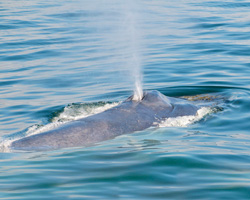
|
|
Blue Whale

Balaenoptera musculus
The blue whale is the largest living animal. |
|
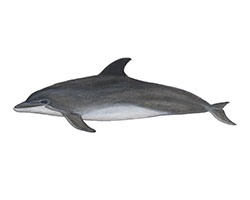
|
|
Bottlenose Dolphin

Tursiops truncatus
The bottlenose dolphin uses echolocation to find its prey. |
|
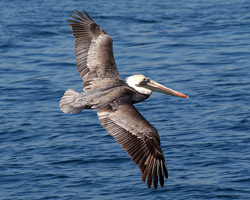
|
|
Brown Pelican

Pelecanus occidentalis
The brown pelican is the smallest of all pelicans and is the only one that plunges from the air into the water to catch its food. |
|
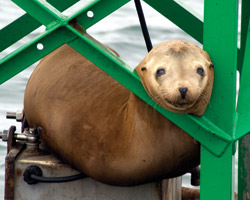
|
|
California Sea Lion

Zalophus californianus
Sea lions use their long front flippers to steer and propel themselves through the water. |
|
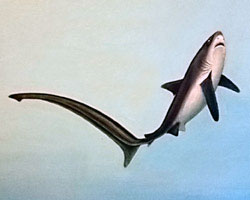
|
|
Common Thresher Shark

Alopias vulpinus
The common thresher shark uses its long tail in a whip-like fashion to deliver incapacitating blows to its prey. |
|

|
|
Cooper of the Sea

Phronima sedentaria
The eyes of this amphipod are so large that they make up nearly a quarter of the entire body. |
|

|
|
Crystal Jelly

Aequorea victoria
Crystal jellies can expand their mouth to eat prey half their size! |
|

|
|
Fin Whale

Balaenoptera physalus
The Fin whale is the second largest animal after the blue whale |
|

|
|
Gray Whale

Eschrichtius robustus
The gray whale is a baleen whale. |
|

|
|
Great White Shark

Carcharodon carcharias
The great white shark is capable of explosive bursts of speed and has been known to jump 3 meters (10 feet) out of the water. |
|

|
|
Humpback Whale

Megaptera novaeangliae
The humpback whale has distinct patterns on the tail flukes used to identify individuals. |
|
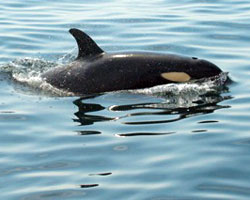
|
|
Killer Whale

Orcinus orca
The killer whale, as known as the orca, is the largest dolphin. |
|
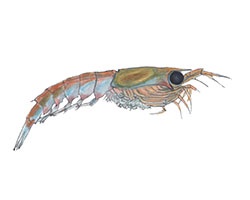
|
|
Krill

Thysanoessa spinifera
Krill are eaten by whales, seals, penguins, squid and fish. |
|
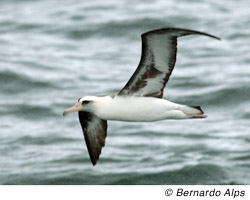
|
|
Laysan Albatross

Phoebastria immutabilis
The wings of a laysan albatross are adapted to lock open into a wingspan of nearly seven feet. |
|

|
|
Pacific Hake

Merluccius productus
The Pacific hake can live up to 15 years. |
|

|
|
Shortfin Mako Shark

Isurus oxyrinchus
The shortfin mako shark is able to elevate its body temperature almost 20°F above the surrounding water. |
|
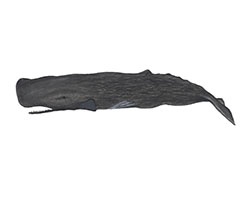
|
|
Sperm Whale

Physeter macrocephalus
The sperm whale is the largest of the toothed whales and the largest toothed predator. |
|

|
|
Western Gull

Larus occidentalis
The Western gull typically lives about 15 years, but can live to at least 25 years. |
|
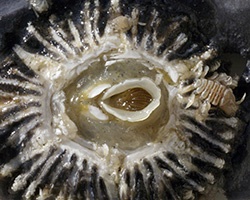
|
|
Whale Barnacle

Cryptolepas rhachianecti
Whale barnacles live attached to the skin of whales. |
|

